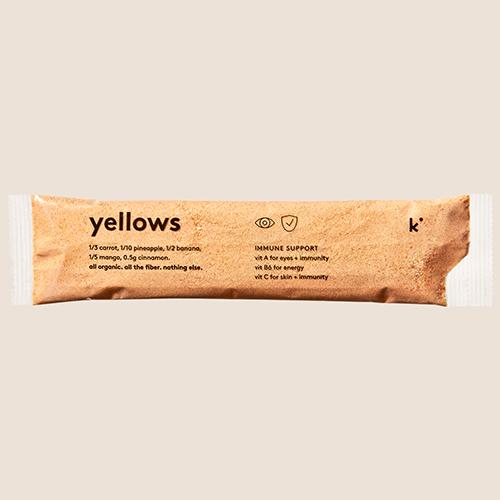Why we love… quinoa
Mineral-rich, protein-packed, and full of subtle flavor: it’s time for everyone’s favorite South American pseudograin to take a bow.
Mineral-rich, protein-packed, and full of subtle flavor: it’s time for everyone’s favorite South American pseudograin to take a bow.
Quinoa is delicious. It pairs well with so many other flavors. It’s got high-quality protein, plenty of fiber, and is loaded with all sorts of vitamins and minerals. We could – and will – go on about quinoa and all of its seemingly magical properties!
But let’s start with the basics.
What is quinoa?
If you really want to split hairs – and we obviously do – quinoa is a “pseudograin.” Like a grain (think: oat, rye, wheat, barley, etc.), the edible portion of a pseudograin is the seed. However, while true grains are derived exclusively from grasses, pseudograins come from broad-leaved or flowering plants.
A distinction without a difference you say? Not necessarily, if you have Celiac Disease or any degree of gluten-sensitivity! Pseudograins are all gluten free, whereas many grains contain gluten.
(Plus, if you can delineate the grain vs. pseudograin divide, you’re bound to be a hit at parties… or at least the kind we go to.)
Two other quinoa-adjacent terms to familiarize yourself with are “superfood” and “ancient grain.”
Now when we say “familiarize yourself with,” we really mean “basically ignore.” Both “super food” and “ancient grain” are marketing terms that are only vaguely – and certainly not scientifically – defined. The first known use of “superfood” was in a 1949 Canadian newspaper article describing a muffin, and “ancient grain” was drummed up as a health food buzzword in a 1996 New York Daily News story.
Before that, quinoa got along just fine without either of these superlatives. People have known about quinoa, its culinary versatility, and its health benefits for millenia.
And how do you pronounce ‘quinoa’? (asking for a friend)
Keen-wa.
Where does quinoa come from?
Quinoa hails from the high elevation of the Andes mountains, specifically the area surrounding Lake Titicaca, which straddles the border between present day Peru and Bolivia. By 3,000 BCE, and possibly even earlier, the once-wild plant had been successfully domesticated for both human and livestock consumption.
An abundance of quinoa is widely credited as one of the reasons for the rise and expansion of the Inca Empire. Not only could the Empire feed its own population, but it could also feed conquered peoples, helping prevent dissension or revolts.
Quinoa was of such great importance to the Inca people that it was known as the “mother grain.” (Maybe it should have been called the “mother pseudograin” but we’ll let it slide, here.) Paired with other staples like potato, beans, and corn, quinoa was the nutritional backbone of an empire.
But that all changed with the Spanish conquest of the Inca Empire. The colonizers sent many farmers into the area’s gold mines. Spanish staple crops were introduced to the region, to satisfy the Spanish palate. And the colonizers quickly came to view quinoa as a crop for the lower classes, further stigmatizing the pseudograin.
Cultivation would remain low until the late 20th century, when global demand for quinoa began to surge, due to a variety of complex global factors. Today, the vast majority of quinoa consumed around the world still originates in Peru, Bolivia, and Ecuador.
What are some of the benefits of eating quinoa?
Quinoa packs a ton of goodness into an itty-bitty, tiny package. We’ll get to all that, but we’d be remiss if we didn’t also give quinoa some credit for tasting great. It has a distinct, subtle nutty flavor, a uniquely crunchy bite to it, and pairs great with just about any savory food you can think of.
But as for its nutritional value, here’s just some of what you’re providing your body when you consume one cup of cooked quinoa:
8 grams of protein: quinoa, a “nearly complete” source of protein, contains all 9 essential amino acids, however not in equal quantities
5 grams of fiber: this is almost 50% more fiber than you’d find in a similarly-sized portion of brown rice
15% of your DV of iron
18% of your DV of zinc
28% of your DV of magnesium
51% of your DV of manganese
19% of your DV of folate
Quinoa contains flavonoid plant compounds that possess antioxidant and anti-inflammatory qualities, like quercetin and kaempferol. Plus, research suggests that eating quinoa regularly can actually lower your risk for cardiovascular disease by lowering your LDL cholesterol levels.
What kencko products contain quinoa?
Look, we love our smoothies. And there are even times when we look back on our days as a smoothie-only company with nostalgic fondness. But by introducing our line of bowls to the equation, we get to play with all sorts of new, not-just-fruit-and-veggie ingredients.
And folks, believe us when we say that we’d been chomping at the bit to work on a kencko x quinoa collab for years.
So we are thrilled to announce that with the recent release of our new chili non carne bowl, all of our wildest quinoa-centric dreams have been realized!
Loaded with lentils and kidney beans and seasoned with oregano, cumin, paprika, and way more, chili non carne is teeming with the rich, deep, well-spiced flavors you’d expect from a slow-simmered, hearty bowl of chili.
And it’s sure to satisfy, whether you turn to it after a grueling day of wrangling cattle out on the open range, you’ve only got 15 minutes to spare for lunch at your indoor, cow-less job, or anything in between.
there's more good content where that came from
